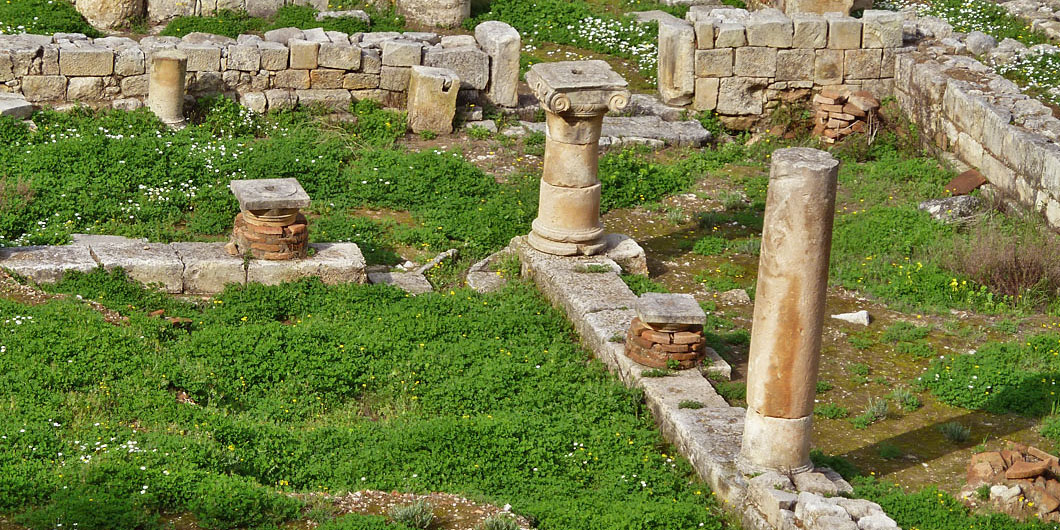Ancient Eleftherna was built at the site where the current village of Eleftherna (formerly known as Prines) is to be found today. Its ruins were brought to light after systematic excavations.

The village is situated south of the fortified hill around which the ancient city of Eleftherna, one of the most prominent ancient city-states of Crete, was built. It surrounded the fortified elevation which was connected to the southern mountain line by a narrow strip of a bridge-like rock.
Considering the Early and Late Minoan pottery that was found, as well as the various remnants of buildings that can be seen, the area must have been inhabited since 2000 BC. However, the city reached its peak in the period during which the Greek city-state (8th - 7th century BC) was developed; then the first major works were constructed on the slopes of the hill. On its western side, one can see the underground water cisterns that were dug out of rock. Their large size also indicates the notable size of the ancient city.
At the foot of the north-eastern slope lies the largest part of the archaeological site, which comes to light little by little, as the excavations conducted by the University of Crete since 1985, proceed.
Ample information about ancient Eleftherna is also brought to us through the excavation of the ancient cemetery in the area of Orthi Petra; these burials have produced significant finds, which help considerably in drawing useful conclusions about life on ancient Crete. Exceptionally important, among the finds of the cemetery, is a certain burial which contains data that brings to mind the burial customs mentioned by Homer in the Iliad, in the description of the funeral pyre of Patroclus, in particular. Furthermore, the great finds of the area help us draw useful conclusions about the relationships that ancient Eleftherna had developed with other Cretan towns, the islands of the Aegean and Athens.
The most important finds are kept in the Archaeological Museum of Rethymnon.

Furthermore, it seems that an important temple existed in Eleftherna, probably dedicated to Apollo, while the arched bridges of the city used to be of architectural interest. It is believed that the Presocratic philosopher Diogenes of Apollonia, the so-called Physicist, a pupil of Anaximenes, originated from Eleftherna.
The book On Nature is numbered among his works Eleftherna prospered from the Roman period until the 9th century AD, when it was destroyed by the Arabs.








